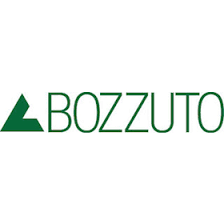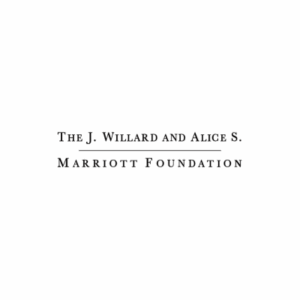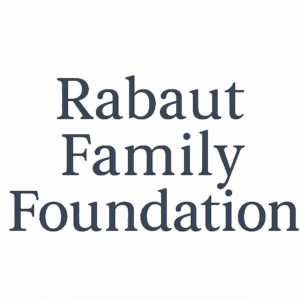Homelessness Increases by 11.6% in the District of Columbia from 2022-2023, Affirming the Need for Organizations like SOME that Help Move People Out of Homelessness through Its Affordable Housing & Supportive Services
Written by Nechama Masliansky and Betty Gentle from SOME’s Advocacy & Social Justice Department
The latest numbers: According to an official enumeration that has been released in May 2023, the total number of “literally homeless persons[i]” counted in the District of Columbia on a specific night in January 2023 was 4,922. This number consisted of:
- 3,750 unaccompanied individuals (“singles”), and
- 1,172 persons in 389 families (including 705 children).
Black persons continue to be overrepresented in homelessness, making up 83% of those counted, which is out of proportion to their overall representation at only 46% of D.C.’s population. The largest age demographic of unaccompanied individuals was seniors (age 55+), who constituted 32% (1,326). There were 218 veterans counted. The count included Transition-Age Youth and LGBTQ+ youth and adults.[ii]
Although the overall trend since 2020 has been a reduction of homelessness in the District, the latest count shows an increase between 2022 and 2023. Overall, DC experienced an 11.6% increase from 2022, with a 10.2% increase among unaccompanied individuals and a 12.1% increase in the number of families (with a 16.4% increase in the number of persons in those families).
Though we are dissatisfied to see an increase in homelessness this year, we know that the investments made in low-income affordable housing have ended homelessness for many. The homelessness count would have been even higher if not for permanent housing, rapid rehousing, and targeted affordable housing for 6,775 unaccompanied adults and 5,325 families. These included persons living in SOME’s housing. “Households in these programs would likely still be in shelter or living in unsheltered situations if not for these permanent housing solutions.”[iii]
Who was counted, and where? Unaccompanied adults were counted on the streets and in the parks (“unsheltered”), in emergency shelters, and in transitional housing[iv]. More than 820 unaccompanied adults were identified as unsheltered, a 19% increase since 2022. A separate analysis shows that 51% of unaccompanied individuals who were served in the District’s Continuum of Care in Fiscal Year 2022 were either new to the system or had not been served since before the COVID-19 pandemic. Of the adults counted, 39% were chronically homeless[v], meaning they have experienced homelessness for at least a year – or repeatedly – while struggling with a disabling condition such as a serious mental illness, substance use disorder, or physical disability.
Families were counted in Short-Term Family Housing sites.
What did we learn about persons who were literally homeless in DC in January 2023?
- 42% of adults in families, and about 13% of unaccompanied adults, were employed but could not afford housing;
- 40% reported a history of institutional involvement (such as treatment programs, long hospital stays, or in the justice system) before experiencing homelessness;
- 28% reported mental-health issues;
- 27% reported domestic violence history, including many who were homeless directly because of domestic abuse;
- 17% reported substance use;
- 15% reported chronic health problems;
- 13% reported spending time in foster care;
- 13% reported physical disabilities;
- 12.1% reported both substance use and mental-health issues.
What is the annual count for? These data are collected annually during D.C.’s Homelessness Enumeration, which is informally known as the Point-in-Time (“PIT”) Count. The count creates a snapshot of the scope and scale of homelessness in the District at a single “point in time.” It is required every two years of every community that receives Federal homelessness assistance funds from the U.S. Department of Housing and Urban Development (HUD), and D.C. goes beyond that requirement to collect the data every year.
The Community Partnership for the Prevention of Homelessness (TCP) coordinates and conducts the count on behalf of the District of Columbia Continuum of Care. PIT data are used locally to plan programs, allocate funding, track progress toward goals outlined in the District’s Homeless Services Plan entitled Homeward DC 2.0[vi] and better meet the needs of our unhoused neighbors. HUD provides a few guidelines for conducting a PIT count, but every community develops its own methodology for implementation.
You can find D.C.’s comprehensive data here, and you can locate the report for the entire D.C. Metropolitan region here.
[i] The region’s jurisdictions use HUD’s definition of homelessness which is defined as people who reside in emergency shelter, transitional housing, domestic violence shelters, runaway youth shelters, safe havens, or places not meant for human habitation, such as streets, parks, alleys, abandoned buildings, and stairways. https://www.mwcog.org/documents/2023/05/10/homelessness-in-metropolitan-washington-results-and-analysis-from-the-annual-point-in-time-pit-count-of-persons-experiencing-homelessness-featured-publications-homelessness/
[ii] The Community Partnership for the Prevention of Homelessness, Homelessness in DC, 2023, https://community-partnership.org/homelessness-in-dc/
[iii] Homelessness in Metropolitan Washington: Results and Analysis from the 2023 Point-in-Time Count of Persons Experiencing Homelessness, https://www.mwcog.org/documents/2023/05/10/homelessness-in-metropolitan-washington-results-and-analysis-from-the-annual-point-in-time-pit-count-of-persons-experiencing-homelessness-featured-publications-homelessness/
[iv] Transitional Housing provides temporary housing with supportive services to individuals and families experiencing homelessness with the goal of interim stability and support to successfully move to and maintain permanent housing.
[v] “Chronic homelessness”: HUD’s definition of an individual experiencing chronic homelessness as an unaccompanied adult or youth head of household is someone with a disabling condition who has either been continuously homeless for a year or more or has had at least four episodes of homelessness in the past three years; the episodes of homelessness must cumulatively equal at least 12 months. The definition of a chronically homeless family includes an adult member of a family who has a disabling condition and meets the same time requirements as an unaccompanied adult. Persons who are not the head of the household under the age of 18 do not meet this definition in this scenario, nor are other adults in the family who do not meet the HUD definition. However, all members of the family household are counted as persons in a family experiencing chronic homelessness. Also, persons under the age of 18 who are heads of household, including unaccompanied youth and parenting youth, may be counted as chronically homeless. https://www.mwcog.org/documents/2023/05/10/homelessness-in-metropolitan-washington-results-and-analysis-from-the-annual-point-in-time-pit-count-of-persons-experiencing-homelessness-featured-publications-homelessness/
[vi] Homeward D.C. 2.0, https://ich.dc.gov/page/homeward-dc-20-ich-strategic-plan-fy2021-fy2025



































